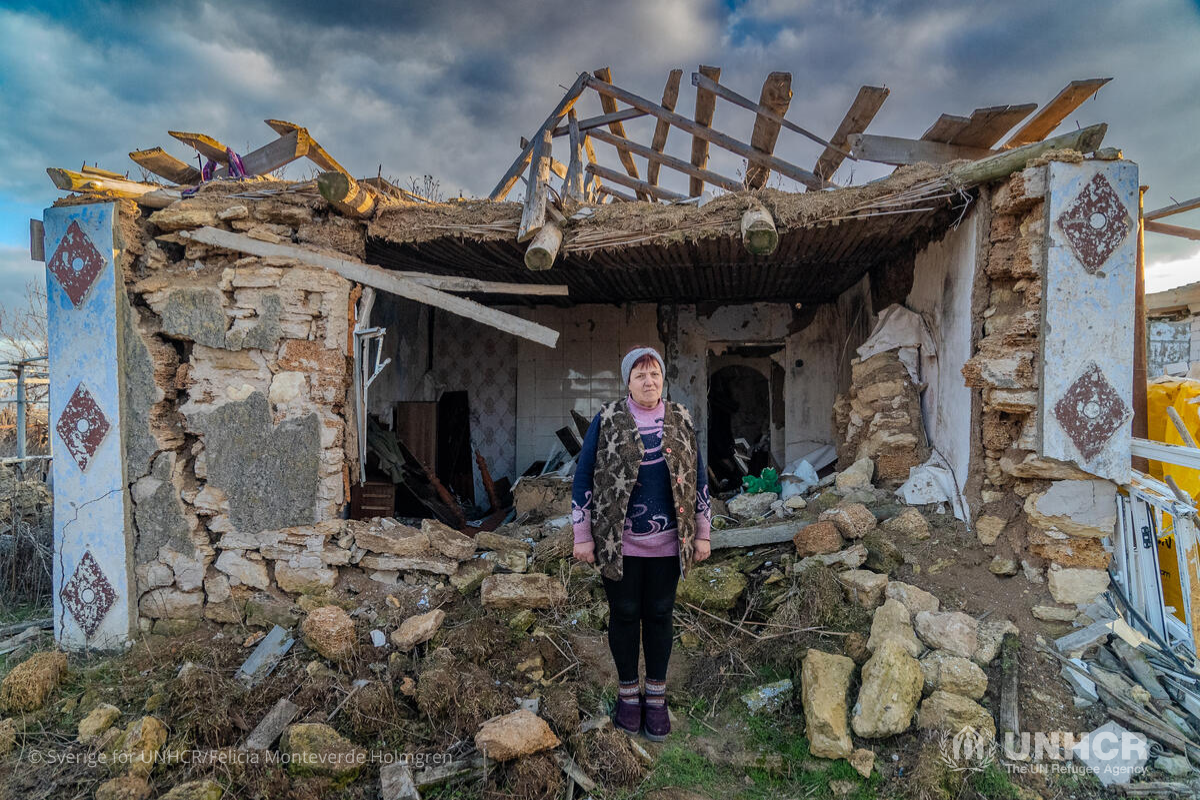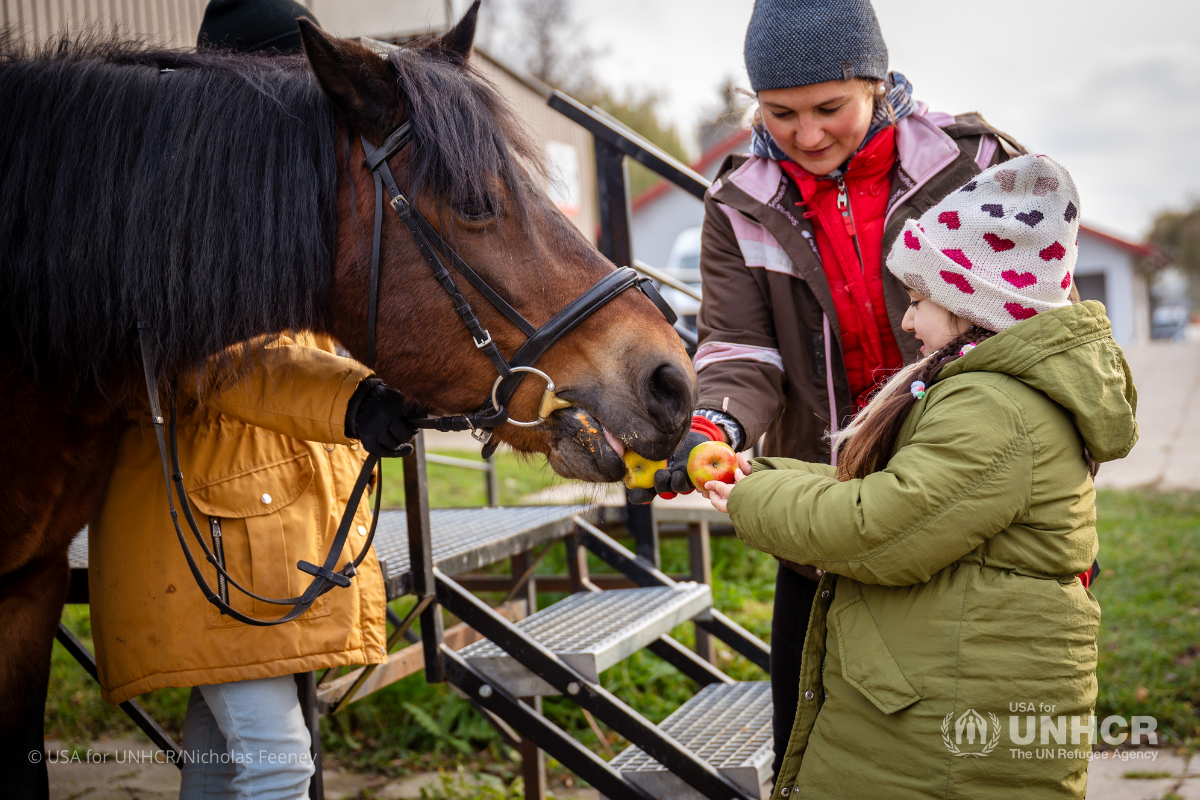Five Takeaways from the 2022 UNHCR Global Trends Report
Global forced displacement is at an all-time high, with the number of forcibly displaced people doubling over the past decade. Today, the global figure exceeds 110 million people forced to flee from persecution, conflict, violence and human rights violations.
The Russian invasion of Ukraine caused the fastest and the largest forced displacement crisis since World War II — and other emergencies and climate-driven events pushed the figure over the dramatic milestone of 110 million by May of 2023.
Food scarcity, inflation and the climate crisis continue to contribute to displacement concerns. Despite these alarming trends, UNHCR, the UN Refugee Agency, continues to support people forced to flee from war, violence and persecution at their greatest moment of need.
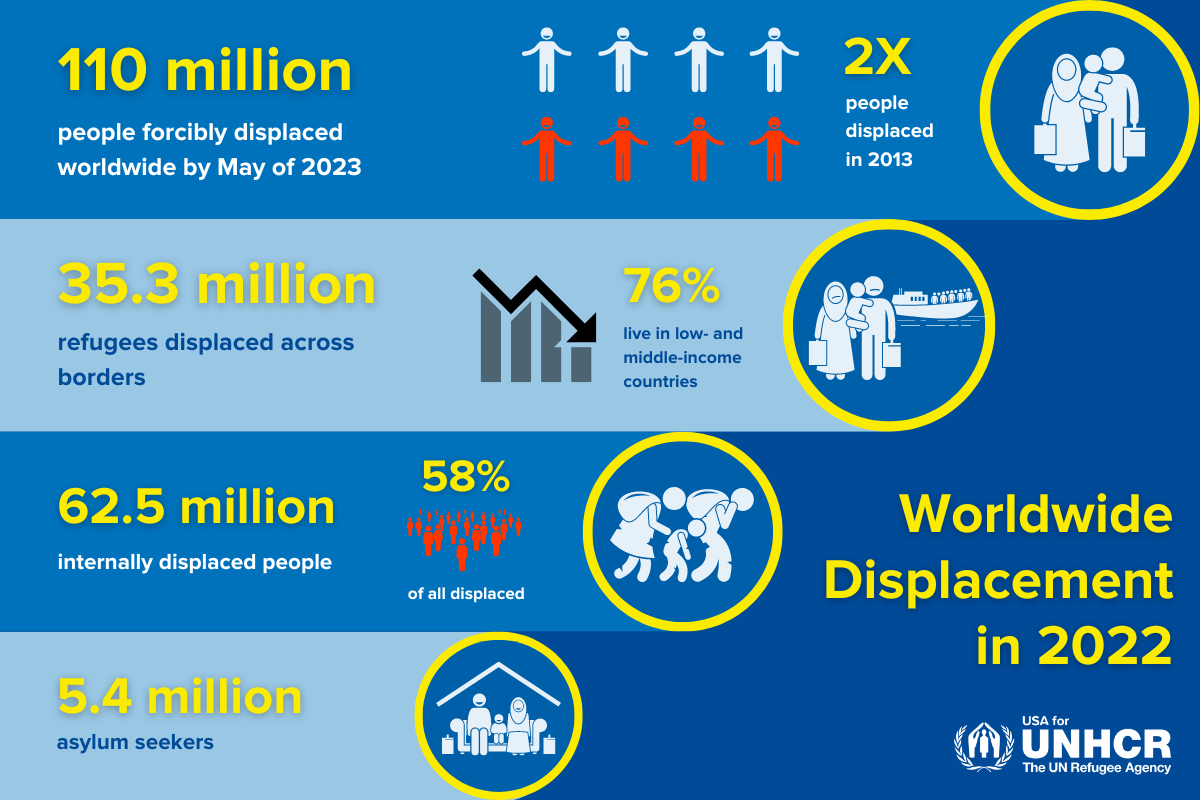
1. By May of 2023, more than 110 million people were forcibly displaced
At the end of 2022, the number of people forcibly displaced by persecution, conflict, violence and human rights violations grew by 21 percent, reaching an estimated 108.4 million. This marks the largest ever single-year increase in forced displacement in UNHCR’s history. Today, forced displacement continues to rise with the global figure likely exceeding 110 million.
More than half of the increase was due to record numbers of refugees, asylum-seekers and other people in need of international protection forced to flee during 2022. The war in Ukraine created the fastest and largest displacement crisis since World War II, with more than 200,000 refugees seeking safety across borders in the early days of the war. While the full-scale invasion of Ukraine was the main driver of displacement in 2022, conflicts and climate-driven upheaval in other parts of the world contributed to rising displacement as well.
With this record increase in forced displacement, the global refugee population rose by more than one-third, reaching 29.4 million by the end of the year. Another 5.2 million people in need of international protection, predominantly from Venezuela, were reported by the end of 2022.
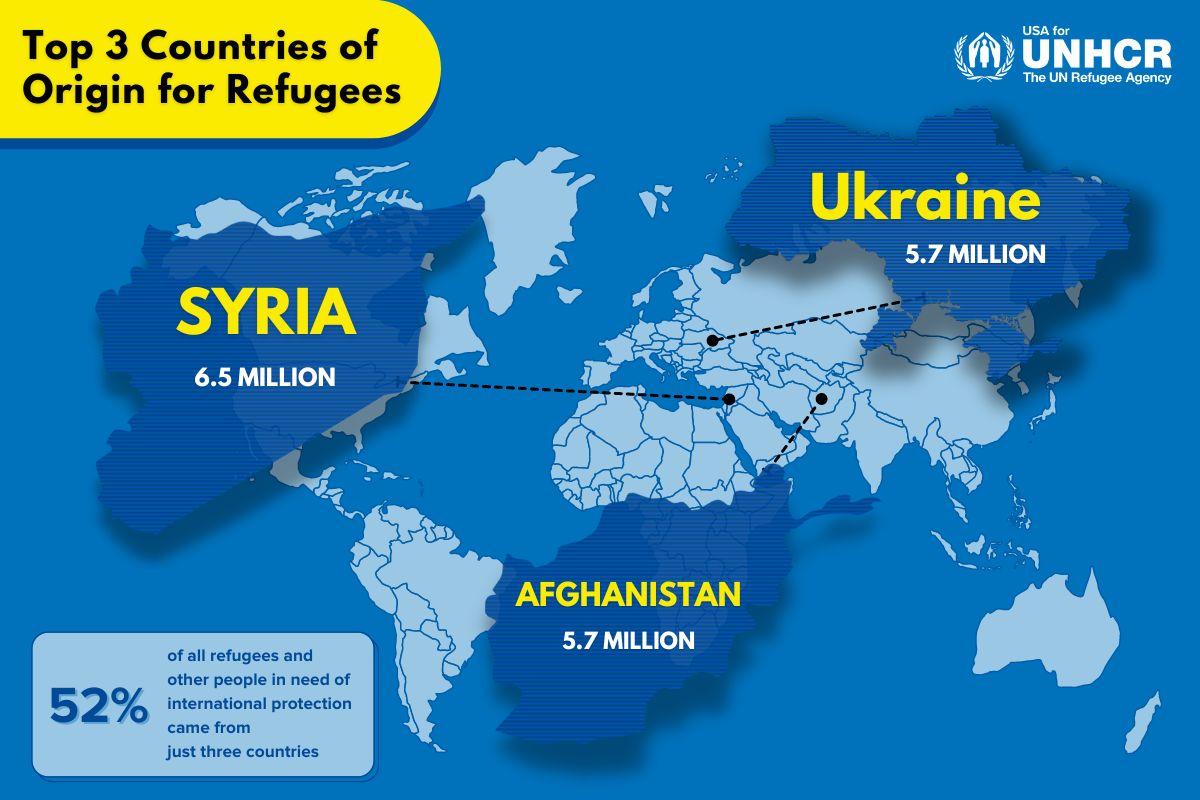
2. More than half of all refugees and people in need of international protection came from just three countries
In 2022, an estimated 52 percent of all refugees and other people in need of international protection came from just three countries: Syria, Ukraine and Afghanistan.
The protracted decade-long conflict in Syria has forced millions of Syrians to flee, making them the largest group of refugees with 6.5 million hosted in 131 countries. More than 75 percent are hosted in neighboring countries such as Türkiye, Lebanon and Jordan. By the end of 2022, Syrian refugees accounted for almost one in five refugees globally.
At the end of 2022, over 16 percent or 5.7 million of the world’s refugees were Ukrainian. This was triggered by the eruption of full-scale war in Ukraine in February 2023. Almost 2.6 million refugees from Ukraine were hosted in neighboring countries, with another 3 million in other European countries and beyond.
The total population of Afghan refugees and people in a refugee-like situation increased drastically from 2.9 million to 5.7 million by the end of 2022. This was largely due to revisions in population estimates in the neighboring Islamic Republic of Iran in 2022, which hosts approximately nine in ten Afghan refugees.
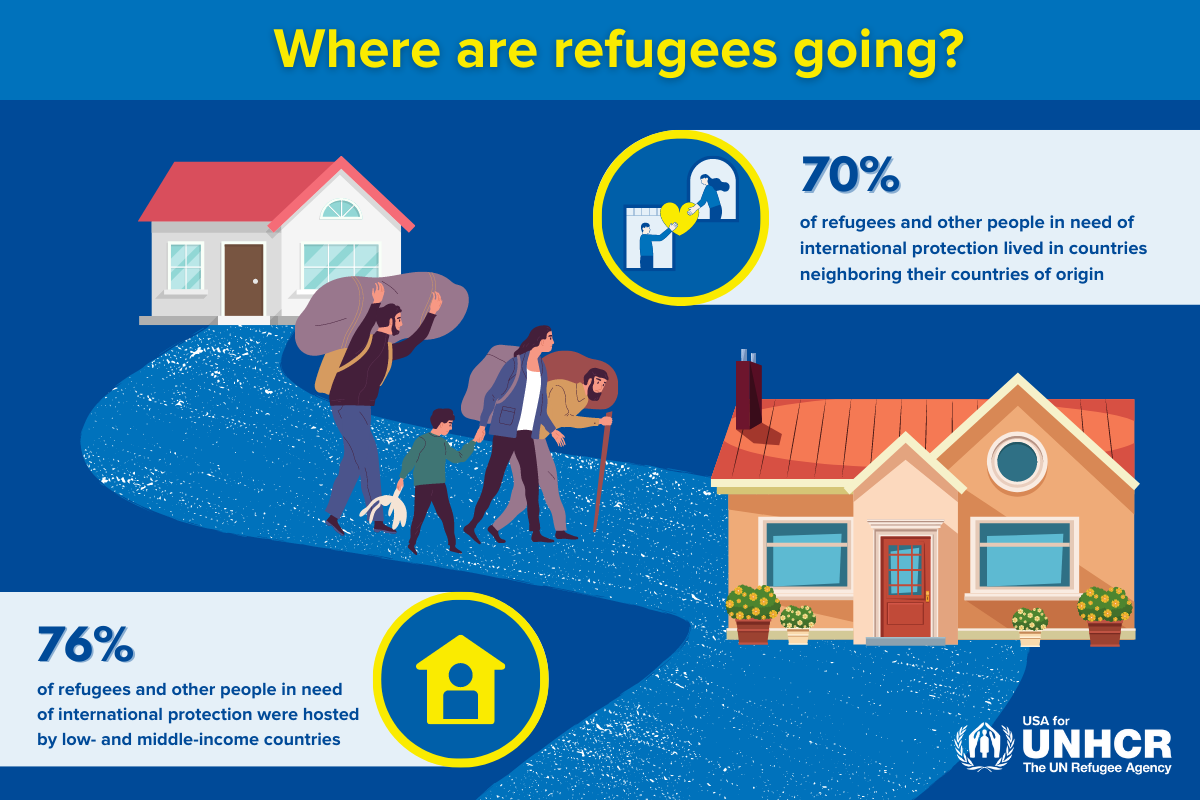
3. Most forcibly displaced people are hosted in neighboring or low- and middle-income countries
Most people who are forced to flee never cross an international border. At the end of 2022, 58 percent of all forcibly displaced people remained in their own country. Refugees and displaced people who flee across international borders stay as close to their countries as possible.
At the end of 2022, 70 percent of refugees, including people in refugee-like situations and other people in need of international protection, were hosted by neighboring countries. Over the last five decades, three-quarters of these same populations remained within their region of origin.
Low-income countries continue to host a disproportionately large share of the world’s displaced population. In 2022, low- and middle-income countries hosted 76 percent of the world’s refugees and other people in need of international protection.
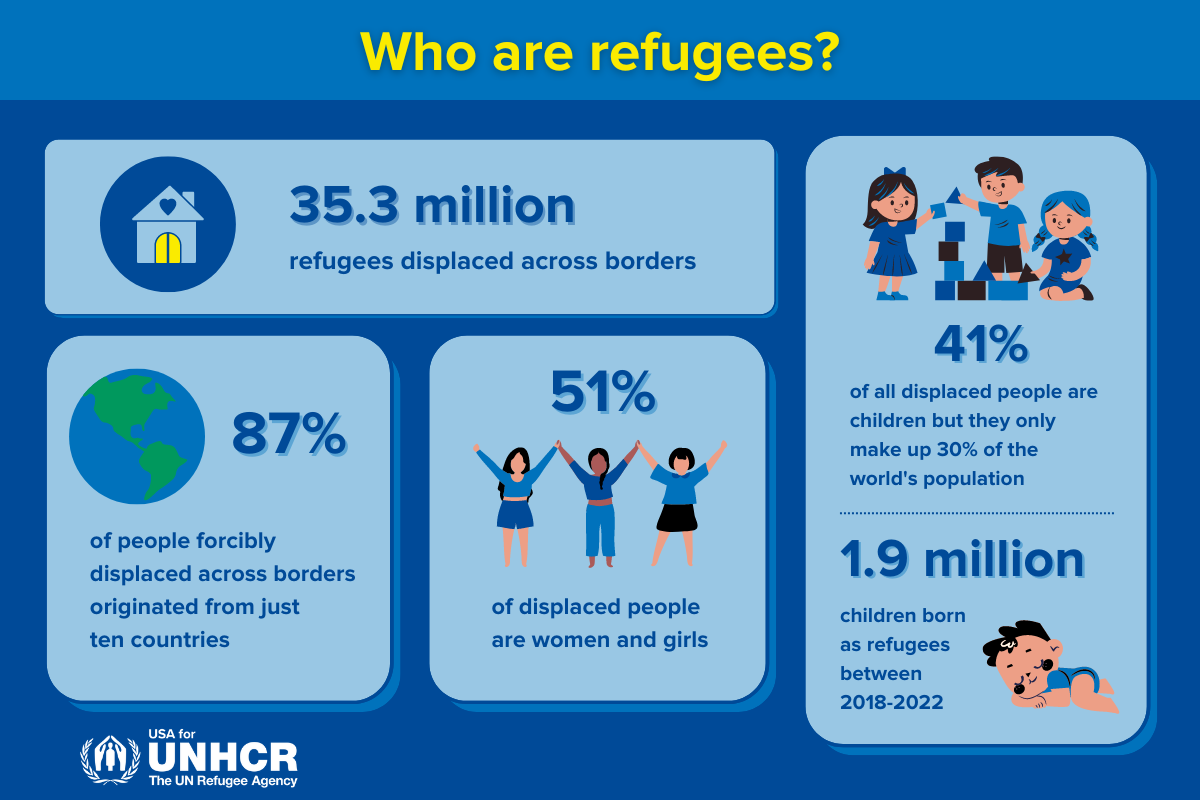
4. Children remain disproportionately impacted by forced displacement around the world
Children are overrepresented in the global refugee crisis, accounting for 41 percent of all forcibly displaced people but only making up 30 percent of the world’s population. UNHCR estimates that more than 1.9 million children were born as refugees between 2018 and 2022 — an estimated 385,000 children per year.
Women and girls represent more than half, or 51 percent, of all refugees forcibly displaced by the end of 2022. Compared with 2021, there were fewer children, more elderly, and more women and girls registered as refugees.
The war in Ukraine forced 5.7 million people to flee the country — refugees from Ukraine accounted for 16 percent of the total refugee population in 2022. Refugees from Ukraine were more likely to be women and girls or elderly and less likely to be children. This is in contrast to most other countries of origin with large refugee populations.
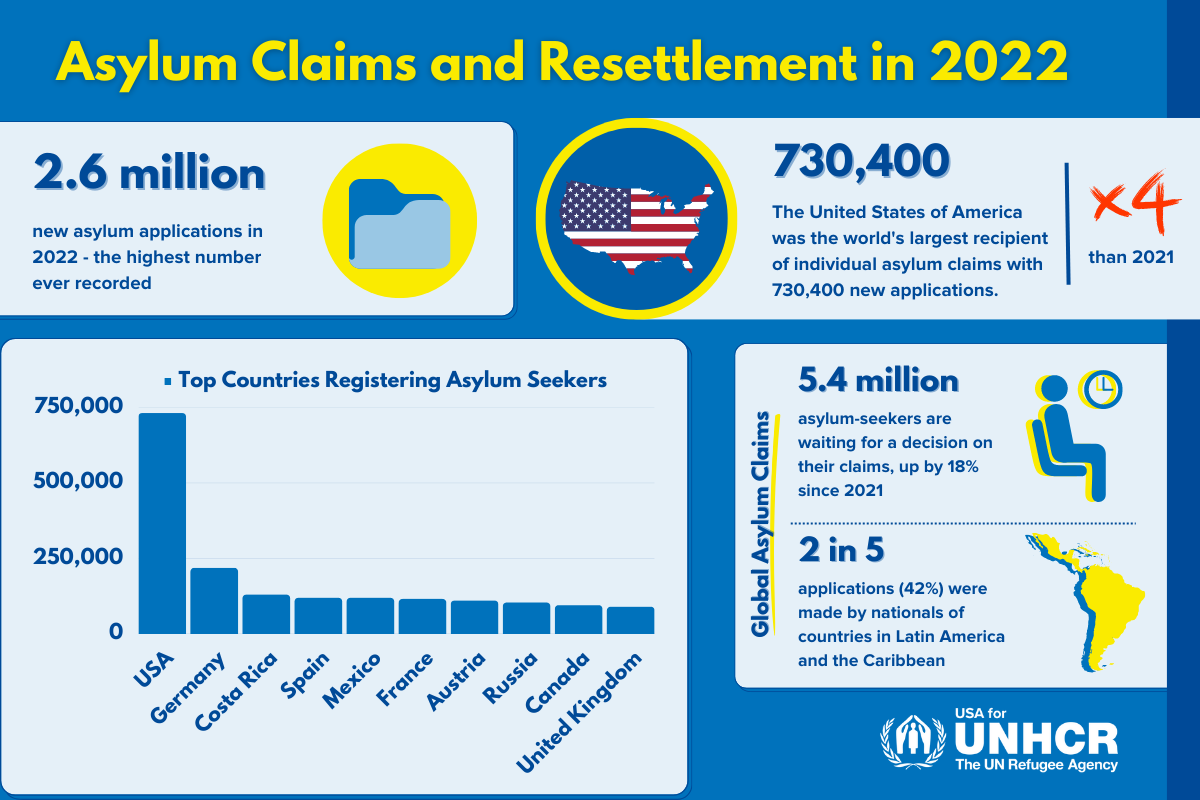
5. The highest number of new asylum applications ever recorded were registered in 2022
In 2022, the highest number of new asylum applications ever recorded — 2.6 million — were registered by more than 140 nationalities in 155 countries. More than two in five of the new asylum applications were made by nationals from Latin America and the Caribbean, most notably from Cuba, Nicaragua and Venezuela. Asylum applications by Afghans and Syrians also grew compared to the previous year.
The United States of America remained the world’s largest recipient of new individual claims with 730,400 new asylum applications in 2022, nearly four times more than in 2021. The volume of new applications meant that the number of asylum-seekers awaiting a decision on their cases climbed 18 percent to 5.4 million.
The increasing number of people forced to flee new or ongoing conflicts around the world underlines how critical the right to apply for asylum remains for millions of people worldwide.
How to help…
With more than 110 million people forced to flee their homes because of war, violence or persecution and critical emergencies adding to this figure everyday — we must act in solidarity and welcome people seeking safety from conflict. Join USA for UNHCR and add your name to say: Every person has the right to seek safety.
